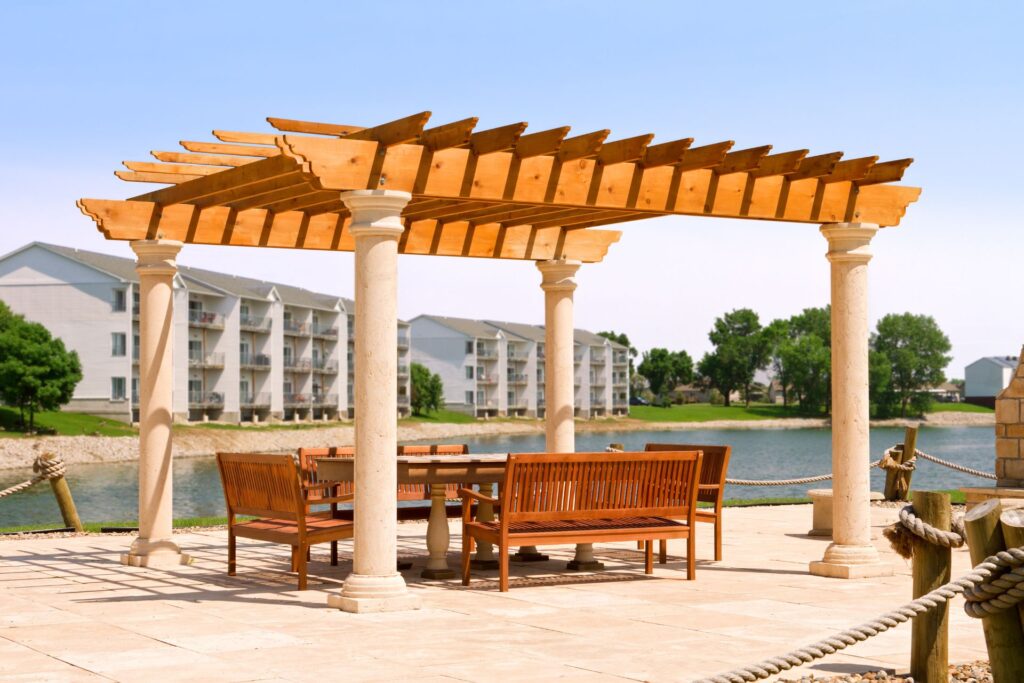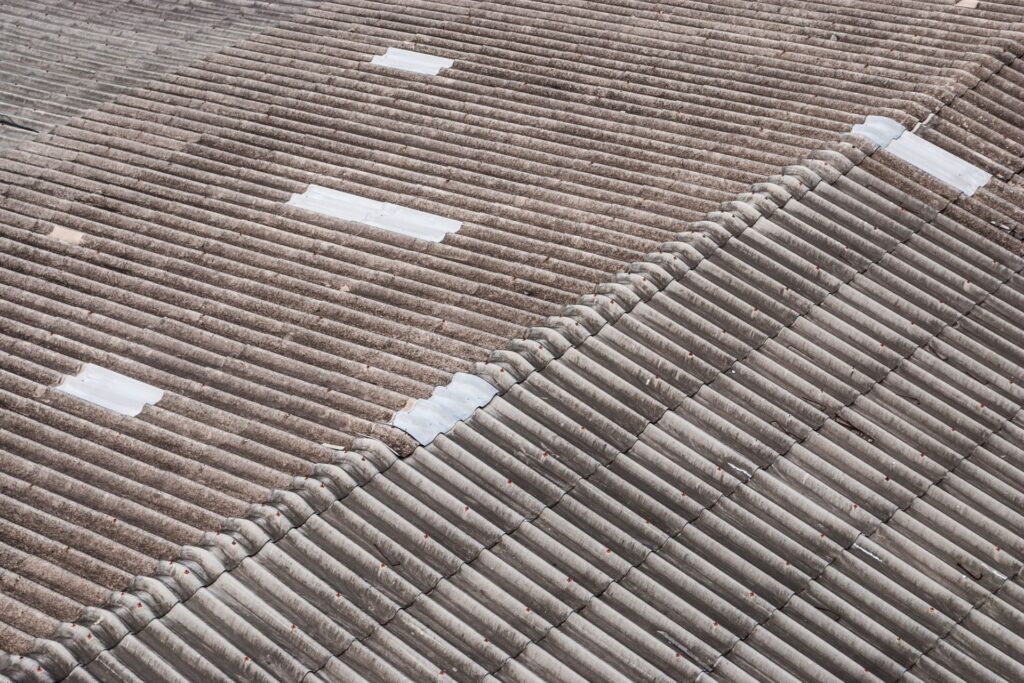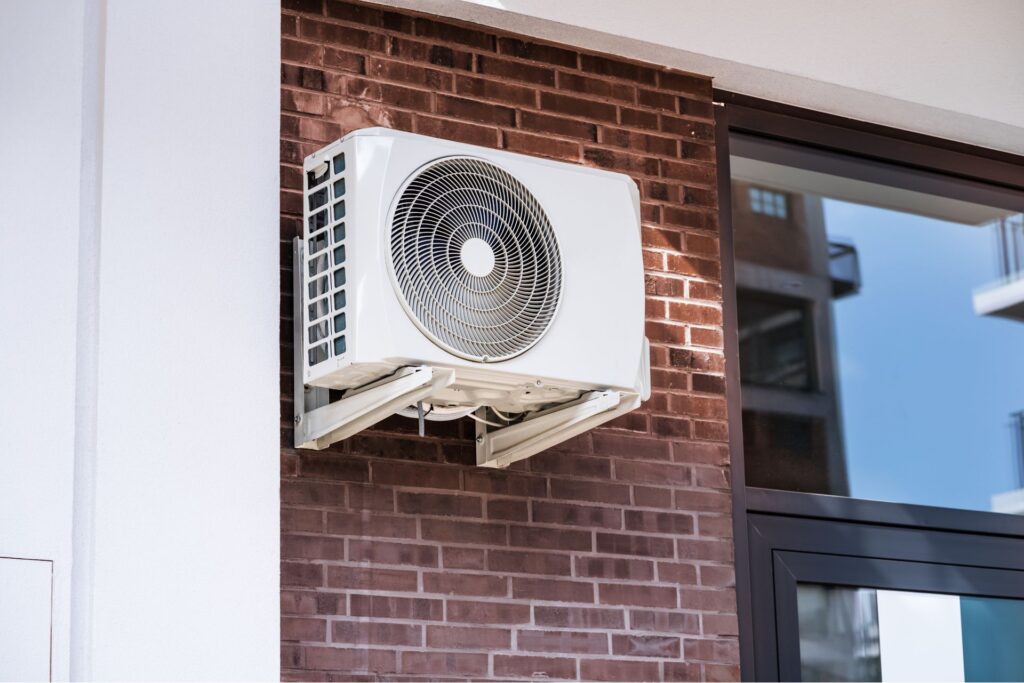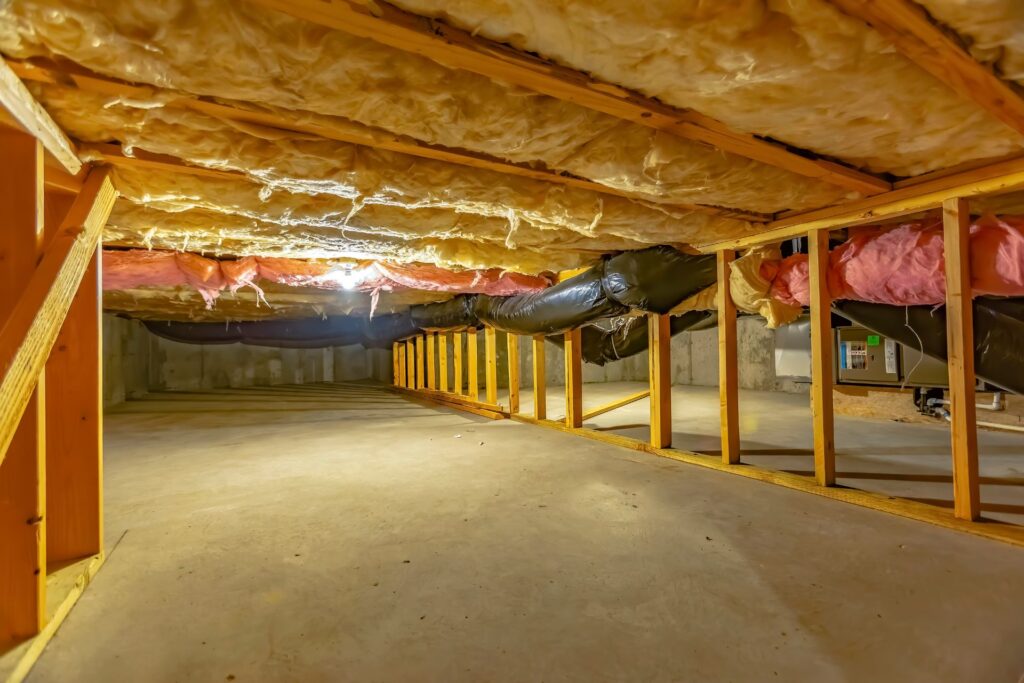Welcome to our comprehensive guide on navigating the costs of landscaping services in New Zealand. As you look to transform your outdoor space into a stunning extension of your home, understanding the financial investment involved is crucial. From the lush, vibrant gardens that capture the essence of Kiwi living to the meticulously designed outdoor areas that blend functionality with aesthetic appeal, landscaping can significantly enhance your property’s value and enjoyment. In this guide, we’ll dive deep into what you can expect to spend on landscaping services across NZ, factor in the elements that influence these costs, and provide insightful tips to help you budget effectively. Whether you’re dreaming of a serene garden retreat or a chic, entertaining outdoor space, we aim to arm you with the knowledge needed to make informed decisions, ensuring your landscaping project not only meets but exceeds your expectations, all while adhering to your budget.
On average, homeowners in New Zealand can expect to spend between NZ$5,000 for basic landscaping projects like small garden enhancements to over NZ$30,000 for comprehensive landscape design and construction. These costs are influenced by various factors, including the project’s scope, choice of materials, labor rates, and the level of expertise required. For instance, simple projects such as planting and garden bed installations typically fall at the lower end of this range, while extensive redesigns, hardscaping, and specialized installations can significantly increase the overall cost.
- Why Invest In Professional Landscaping Services?
- The Average Cost Of Landscaping Services In New Zealand
- Factors Influencing Landscaping Costs
- Budgeting For Your Landscaping Project
- How To Save Money On Landscaping Services Without Compromising Quality
- The Return On Investment (ROI) Of Landscaping Services
- Choosing The Right Landscaping Service Provider In NZ
- FAQs: About The Cost Of Landscaping Service NZ
- Conclusion
- Find A Landscaping Company Near You
Why Invest In Professional Landscaping Services?
Creating a vibrant and inviting outdoor space is not just about planting a few flowers or mowing the lawn; it involves thoughtful design, careful planning, and ongoing maintenance. This is where investing in professional landscaping services can make a significant difference. In this detailed exploration, we delve into the reasons why professional landscaping is a wise choice for homeowners and property managers alike.
Expertise and Knowledge at Your Fingertips
One of the primary reasons to consider professional landscaping services is the expertise they bring to your garden. Landscaping professionals are not just gardeners; they are artists and scientists rolled into one. They understand the intricacies of soil types, the nuances of local climate, and the best plant species that will thrive in your garden. Their knowledge extends to designing landscapes that are not only beautiful but also sustainable and easy to maintain.
Time-Saving Solutions for Busy Lives
In today’s fast-paced world, time is a precious commodity. Professional landscapers can save you countless hours that you might otherwise spend planning, planting, and maintaining your garden. They handle everything from the initial design to the regular upkeep, allowing you to enjoy your beautiful outdoor space without the need to invest your own time and effort. This convenience is invaluable for busy homeowners who want to enjoy a beautiful garden without the commitment of their personal time.
Enhancing Property Value Through Strategic Landscaping
An often-overlooked benefit of professional landscaping is its ability to significantly increase the value of your property. A well-designed landscape not only enhances the curb appeal of your home but also contributes to a positive first impression, which can be crucial during the sale process. Studies have shown that attractive landscaping can increase property value by as much as 15-20%. It’s an investment that pays for itself, not just in terms of aesthetics but also in financial value.
Cost-Saving and Value-Adding Benefits
While some might hesitate at the thought of the initial investment required for professional landscaping, it’s important to consider the long-term cost savings and value-adding aspects. Professional landscapers design gardens with sustainability in mind, selecting plants that are appropriate for the local climate and soil conditions, which can reduce water usage and the need for chemical treatments. Additionally, their expertise can prevent costly mistakes, such as the wrong placement of trees that can interfere with utility lines or the foundation of your home.
Moreover, the ongoing maintenance services provided by professionals ensure that your garden remains in top condition, further enhancing its value and appeal over time. This consistent care not only saves you money on replacement plants and repairs but also ensures that your landscape continues to add value to your property year after year.
Investing in professional landscaping services is a smart decision for those looking to enhance the beauty, functionality, and value of their outdoor spaces. With the expertise of professionals, you can save time, avoid costly mistakes, and enjoy a beautifully designed landscape that reflects your personal style and complements your home. Whether you’re looking to create a peaceful backyard retreat or an elegant front garden, professional landscaping services can transform your vision into reality, making it a worthwhile investment for any homeowner.

The Average Cost Of Landscaping Services In New Zealand
Embarking on a landscaping project can transform your outdoor space, but understanding the financial investment required is essential for homeowners in New Zealand. In this detailed guide, we’ll delve into the average costs associated with various landscaping services across NZ, offering insights into garden design, hardscaping, planting, and maintenance. Additionally, we’ll explore how these prices fluctuate across different regions, ensuring you have a comprehensive understanding of what to expect budget-wise.
Understanding Landscaping Costs in New Zealand
Landscaping can significantly enhance the aesthetic appeal and functionality of your property. However, the costs involved can vary widely depending on the scope and complexity of your project. In New Zealand, landscaping services encompass a broad spectrum of activities, each with its unique price tag.
Garden Design: The blueprint of your landscaping project, garden design, involves planning the layout and selecting plants and features that complement your outdoor space. Professional garden designers in New Zealand charge anywhere from $50 to $150 per hour. A full garden design plan can cost between $500 to $3,000, depending on the size of your property and the intricacy of the design.
Hardscaping: This refers to the installation of non-living elements like patios, decks, walkways, and walls. Hardscaping projects are priced based on the materials used and the project’s scale, with costs typically ranging from $100 to $300 per square meter. More complex installations, such as custom water features or retaining walls, can push prices higher.
Planting: The cost of planting includes the purchase of plants, soil, mulch, and labor for installation. Depending on the types of plants selected and the project’s scale, you can expect to pay between $10 to $30 per plant, with labor costs adding an additional $50 to $100 per hour.
Maintenance: Ongoing maintenance is crucial to keeping your landscaped garden looking its best. Regular maintenance services can range from $30 to $70 per hour, covering tasks like pruning, weeding, fertilizing, and lawn care.
Regional Price Variations
It’s important to note that landscaping costs can vary significantly across different regions in New Zealand. Urban areas, particularly in major cities like Auckland, Wellington, and Christchurch, tend to have higher landscaping costs due to increased labor rates and the higher cost of materials. In contrast, rural areas may offer lower prices but with potentially limited access to specialized services or materials.
Factors such as the availability of local contractors, the cost of transporting materials, and regional differences in climate (which can affect the types of plants and materials suitable for use) also play a role in shaping the overall cost of landscaping services.
Investing in professional landscaping services can dramatically transform your property, increasing its value and enhancing your enjoyment of the outdoor space. By understanding the average costs associated with garden design, hardscaping, planting, and maintenance, as well as regional variations in pricing, New Zealand homeowners can make informed decisions that align with their budget and landscaping goals.
As you plan your landscaping project, consider obtaining multiple quotes from local contractors to get a clearer picture of the costs involved. Remember, the cheapest option may not always be the best in terms of quality and durability. Balancing cost with the expertise and reputation of the service provider will ensure your landscaped garden is both beautiful and sustainable for years to come.

Factors Influencing Landscaping Costs
When planning a landscaping project, understanding the factors that influence the overall cost is crucial. This understanding helps homeowners and property managers make informed decisions, ensuring that their outdoor spaces not only meet aesthetic and functional requirements but also align with budget constraints. In this section, we delve into the intricacies of what drives landscaping costs, focusing on project scope and complexity, material and plant selection, labor and expertise, and the often-overlooked ongoing maintenance expenses.
Project Scope and Complexity
The size and complexity of a landscaping project are among the primary determinants of its cost. Simple designs, such as adding flower beds or installing a basic patio, require less planning, materials, and labor, making them more budget-friendly. Conversely, extensive overhauls that involve structural elements like retaining walls, water features, or outdoor kitchens demand more in-depth design, sophisticated materials, and a skilled workforce, significantly driving up the price. Complexity also extends to the terrain of the property; steep slopes, poor soil conditions, and access issues can all add layers of challenges that impact the final cost.
Materials and Plants
The choice of materials and plants plays a significant role in the landscaping budget. Opting for high-end or exotic materials such as specialty paving stones or rare plant species can escalate costs quickly. In contrast, using local, native plants and materials can be both cost-effective and environmentally friendly, as these options are typically more readily available and suited to the local climate, reducing the need for extensive maintenance. The sustainability angle also appeals to a growing segment of homeowners interested in creating green spaces that contribute positively to the environment.
Labor and Expertise
The expertise of the landscaping team directly impacts the project’s budget. Hiring seasoned professionals might come with a higher upfront cost, but their efficiency, knowledge of best practices, and ability to foresee and mitigate potential issues can save money in the long run. These experts bring value through their design skills, understanding of materials, and craftsmanship, ensuring that the finished project meets expectations and lasts for years. On the other hand, opting for less experienced contractors might reduce initial expenses but could lead to higher costs over time due to the need for corrections or revisions.
Ongoing Maintenance Costs
A factor that often goes unnoticed until after the project’s completion is the cost of ongoing maintenance. The design choices made during the planning phase will influence the level of care required to keep the landscape looking its best. High-maintenance designs that feature extensive flower beds, delicate plants, or water features will necessitate more frequent care, potentially requiring professional maintenance services. Selecting durable materials and plants that are native to the region can minimize these long-term costs, ensuring the landscape remains beautiful and functional with minimal effort.
In summary, a well-planned landscaping project considers not just the immediate aesthetic and functional improvements but also the long-term implications on maintenance and costs. By carefully evaluating the scope and complexity of the project, choosing appropriate materials and plants, investing in skilled labor, and planning for ongoing maintenance, homeowners can create stunning outdoor spaces that enhance their property’s value and enjoyment for years to come.

Budgeting For Your Landscaping Project
Crafting a realistic budget for your landscaping project is crucial to ensuring that your dream outdoor space doesn’t become a financial nightmare. A well-planned budget helps you allocate resources wisely, avoid overspending, and ultimately achieve the aesthetic and functional goals you have for your property. In this section, we’ll dive deep into how to approach budgeting for your landscaping project, emphasizing the importance of obtaining multiple quotes and fully understanding what those quotes encompass.
Setting a Realistic Landscaping Budget
The first step in budgeting for your landscaping project is to establish a clear vision of what you want to achieve. Are you looking to add a few flower beds, or are you dreaming of a complete outdoor overhaul complete with a water feature and a new patio? Once you have a solid idea of your project’s scope, research the average costs of similar projects in your area. This can give you a ballpark figure to start with.
However, every project is unique, and costs can vary widely based on the complexity of the design, the materials chosen, the size of your property, and local labor rates. That’s why it’s essential to:
Prioritize your needs and wants: List out all the elements you envision for your space, then categorize them by necessity. Focus your budget on must-haves before considering the nice-to-haves.
Set aside a contingency fund: Unexpected costs can arise, especially in projects involving significant structural changes or the discovery of issues like poor soil quality or drainage problems. Experts recommend setting aside 10-20% of your budget for unforeseen expenses.
Consider long-term maintenance costs: It’s not just the upfront costs you need to think about. Certain landscaping choices can increase or decrease your future maintenance expenses. Opting for native plants, for example, can reduce water and care requirements.
The Importance of Multiple Quotes
Once you have a rough budget in mind, it’s time to start gathering quotes from landscaping professionals. Here’s why getting multiple quotes is essential:
Cost Variance: Prices can differ significantly from one contractor to another. By comparing several quotes, you ensure you’re getting competitive pricing.
Scope of Services: Not all landscapers offer the same services or include the same items in their quotes. One quote might include site preparation and cleanup costs, while another might not.
Quality and Experience: The lowest quote isn’t always the best choice. Reviewing multiple quotes allows you to assess each contractor’s experience, reputation, and the quality of their previous work.
To make the most out of the quotes you receive, follow these tips:
Be Specific: When requesting quotes, provide as much detail about your project as possible. This reduces the likelihood of misunderstandings and ensures the quotes you receive are as accurate as possible.
Ask for an Itemized Quote: This breaks down the total cost into specific expenses like labor, materials, and additional services. It’s crucial to understand what you’re paying for and to compare quotes on a like-for-like basis.
Inquire About Guarantees and Warranties: These can provide peace of mind and protect your investment. Make sure to understand what’s covered and for how long.
In conclusion, setting a realistic budget for your landscaping project involves careful planning, prioritization, and preparation for unexpected costs. Moreover, obtaining and meticulously comparing multiple quotes not only helps ensure you get the best value for your money but also provides insights into the scope and quality of services offered by different landscaping professionals. By following these guidelines, you can confidently navigate the financial aspects of transforming your outdoor space, making informed decisions that align with your vision and budget.

How To Save Money On Landscaping Services Without Compromising Quality
Creating a stunning outdoor space doesn’t have to drain your wallet. In this section, we dive deep into savvy strategies for economizing on landscaping services without sacrificing the allure or longevity of your project. Whether you’re a hands-on DIY enthusiast or considering professional services, understanding when to save and when to splurge can lead to significant savings without compromising on quality.
DIY Tips vs. Professional Services: When to Save and When to Splurge
Embarking on a DIY landscaping project can be immensely satisfying and budget-friendly. However, it’s crucial to recognize when a task is within your skill set and when it’s time to call in the experts. For simple projects like planting flower beds or installing a small vegetable garden, going DIY can save you a considerable amount of money. On the other hand, for complex tasks such as electrical work for outdoor lighting or intricate hardscaping, hiring professional services ensures safety and quality, making it a worthy investment.
The Benefits of Using Local and Seasonal Plants to Reduce Costs
Incorporating local and seasonal plants into your landscape design is a secret weapon for cost reduction. These plants are not only acclimated to your region’s climate, reducing the need for extensive care and resources, but they’re also generally more affordable and readily available at local nurseries. By choosing indigenous plants, you’re opting for a low-maintenance, resilient landscape that thrives naturally, allowing you to save on ongoing maintenance costs and contribute to local biodiversity.
Strategies for Phased Landscaping: Completing Your Project in Stages to Spread Out Costs
Phased landscaping is a strategic approach that allows you to achieve your dream outdoor space without the financial strain of completing it all at once. By planning your project in stages, you can spread out the costs over time, making it easier to manage financially. This approach also offers the flexibility to adjust plans as needed based on budget constraints or changing preferences. Starting with the essentials and gradually adding elements allows for dynamic development of your landscape, ensuring each phase is executed to the highest quality without breaking the bank.
In conclusion, creating a beautiful and functional outdoor space on a budget is entirely achievable with the right approach. By understanding when to undertake DIY projects versus when to invest in professional services, utilizing local and seasonal plants, and adopting a phased approach to your landscaping project, you can save money without compromising on the quality of your outdoor oasis.

The Return On Investment (ROI) Of Landscaping Services
In today’s real estate market, homeowners and property investors are constantly seeking ways to enhance the value of their properties. One of the most effective strategies for achieving this goal is through investing in landscaping services. This section delves into the significant impact that professional landscaping can have on property value, highlighting the aspects that typically offer the best return on investment (ROI).
Enhancing Property Value through Landscaping
Landscaping is not just about beautifying your outdoor space; it’s a strategic investment that can significantly increase your property’s market value. A well-designed landscape not only provides aesthetic appeal but also creates a positive first impression that can attract potential buyers. Research has shown that professional landscaping can increase a property’s value by up to 20%, making it a worthwhile investment for homeowners looking to sell their property for a premium price.
The impact of landscaping on property value goes beyond mere aesthetics. It can also enhance the functionality of your outdoor space, making it more appealing to prospective buyers. For instance, incorporating outdoor living areas, such as patios and decks, can extend the living space of your home, adding to its value. Similarly, adding trees and shrubs can provide privacy and shade, improving the overall livability of the property.
Landscaping Aspects That Offer the Best ROI
When considering landscaping investments, it’s crucial to focus on elements that offer the highest ROI. Here are some landscaping aspects that have been consistently recognized for their positive impact on property value:
Curb Appeal: The front yard is the first thing potential buyers see, making curb appeal critical in forming their initial impression. Simple enhancements like a well-maintained lawn, colorful flower beds, and a clear, inviting pathway can significantly boost curb appeal and, by extension, property value.
Mature Trees: Mature trees are highly valued for their ability to provide shade, privacy, and aesthetic appeal. They are considered a wise investment as they can save on energy costs and attract buyers looking for a mature, established landscape.
Outdoor Living Spaces: As mentioned earlier, adding functional outdoor living spaces can extend the usable square footage of your home. Features like patios, decks, and outdoor kitchens are highly sought after and can substantially increase your property’s value.
Low-Maintenance Landscaping: In today’s busy world, low-maintenance landscapes are increasingly popular. Drought-tolerant plants, perennial gardens, and automated irrigation systems can make your property more attractive to buyers looking for beautiful yet easy-to-maintain outdoor spaces.
Lighting: Proper outdoor lighting can transform your landscape, highlighting its best features and making it more secure. It’s a relatively low-cost investment that can have a significant impact on your property’s appeal after sundown.
In conclusion, investing in landscaping services is a smart strategy for enhancing the value of your property. By focusing on aspects that offer the best ROI, such as improving curb appeal, incorporating mature trees, adding outdoor living spaces, opting for low-maintenance solutions, and installing effective lighting, you can create an outdoor space that not only looks beautiful but also contributes significantly to your property’s market value. Whether you’re looking to sell your home or simply want to increase its value, professional landscaping is an investment worth considering.

Choosing The Right Landscaping Service Provider In NZ
In the bustling realm of home improvement and garden beautification in New Zealand, selecting the perfect landscaping service is a pivotal decision that homeowners face. It goes beyond mere aesthetics; it’s about transforming a vision into reality. In this section, we delve into the critical considerations and steps necessary to make an informed decision. This guide aims to ensure that your landscaping journey is as smooth and fulfilling as possible.
Key Considerations When Selecting a Landscaping Service
The first step in choosing a landscaping service is to evaluate the key factors that will influence your decision. Here are some essential considerations:
Experience: The number of years a landscaping company has been in business can speak volumes about its ability to deliver quality work. Experienced landscapers bring a wealth of knowledge about local climate conditions, soil types, and native plants, ensuring that your garden is not only beautiful but also sustainable.
Portfolio: A reputable landscaping service should have a comprehensive portfolio of previous projects. This not only showcases their skill and creativity but also provides you with a glimpse into whether their style aligns with your vision. It’s an excellent opportunity to see the variety and quality of their work firsthand.
Reviews: In today’s digital age, online reviews and testimonials play a crucial role in decision-making. They offer insights into the experiences of previous clients with the service provider. Look for patterns in feedback regarding their professionalism, timeliness, and response to issues.
The Importance of Clear Communication and Understanding the Contract
A successful landscaping project is built on the foundation of clear communication between you and your service provider. Here’s why:
Clear Expectations: From the outset, it’s crucial that both parties have a mutual understanding of the project scope, design preferences, timeline, and budget. This clarity prevents misunderstandings and ensures that the final outcome meets your expectations.
Contract Transparency: A detailed contract is a safety net for both the homeowner and the service provider. It should outline the project’s scope, cost breakdown, payment schedule, and any guarantees or warranties. Understanding your contract protects you against unforeseen charges and provides a clear course of action should any disputes arise.
Regular Updates: Throughout the project, regular communication is key to addressing any concerns or adjustments promptly. It keeps you informed of the progress and any changes that may affect the project’s timeline or budget.
In conclusion, choosing the right landscaping service provider in New Zealand is a decision that requires careful consideration. By focusing on experience, portfolio, and reviews, you can narrow down your options to those most capable of bringing your vision to life. Moreover, clear communication and a thorough understanding of your contract are essential to ensuring a successful and satisfying landscaping project. By following these guidelines, you’re well on your way to creating an outdoor space that not only reflects your style but also enhances your quality of life.

FAQs: About The Cost Of Landscaping Service NZ
Conclusion
Wrapping up our journey through the myriad benefits of professional landscaping, it’s crucial to revisit the transformative potential it holds for enhancing both the aesthetic appeal and functionality of your outdoor spaces. Reflect on how aligning your specific desires with your budget is not just an expenditure but a valuable investment into your property’s worth and your quality of life. Professional landscaping services offer a unique blend of expertise, creativity, and precision, capable of turning your vision into a reality and making your outdoor space a true extension of your home. As we conclude, I encourage you to consider the long-term joy and value professional landscaping can bring to your life. Reach out for a personalized consultation to uncover the full potential of your outdoor spaces, and let’s embark on the journey to realize your dream landscape. Together, we can transform your vision into a vibrant, life-enhancing reality.









